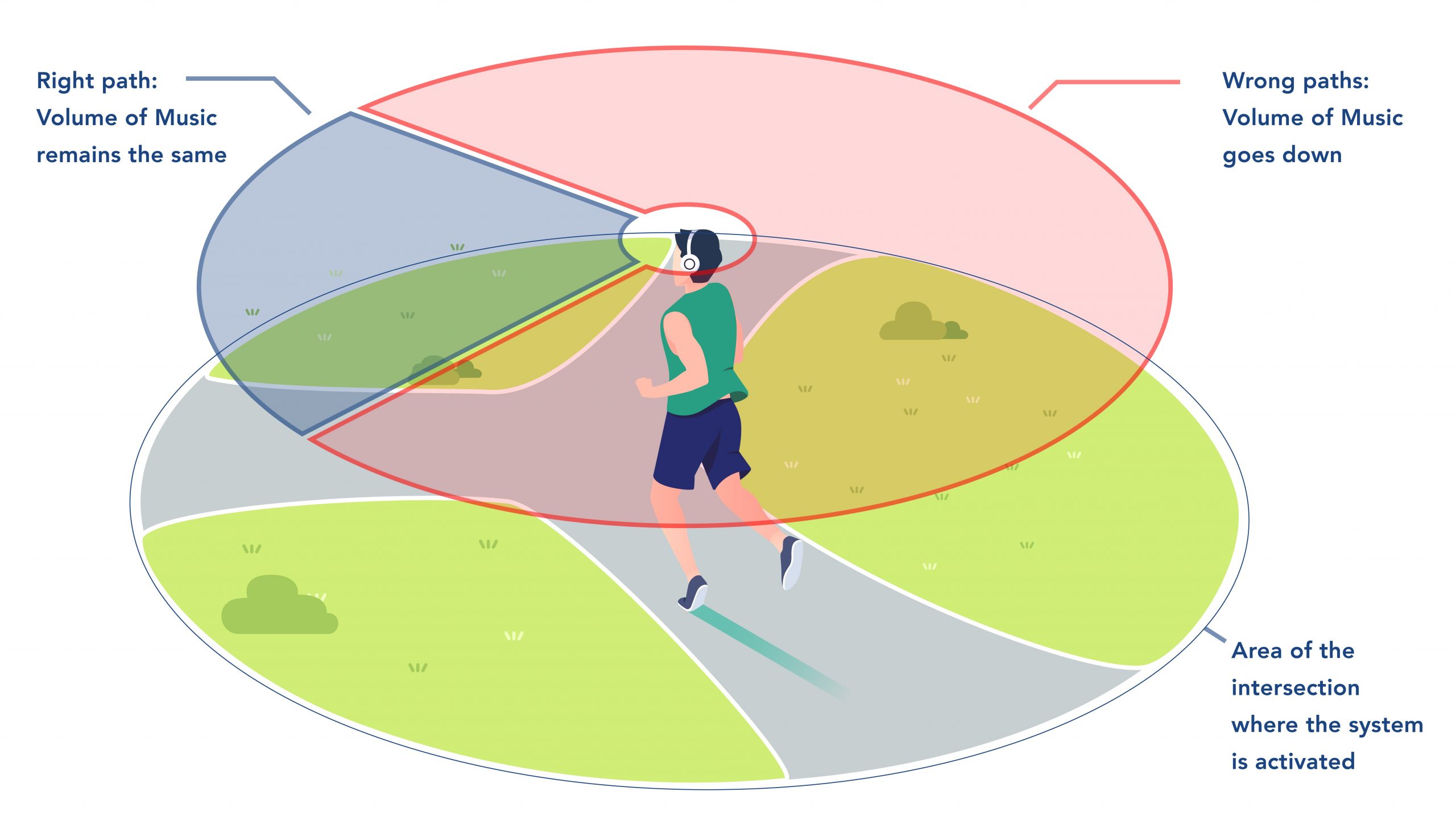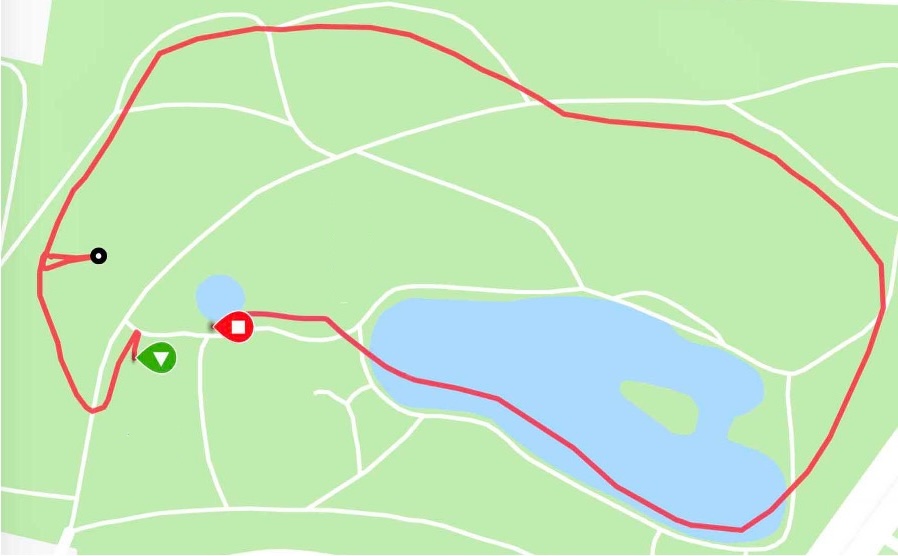Follow the Music. Navigation Support for Runners
This project investigated innovative solutions to guide runners along unfamiliar paths with minimal intrusion. We explored the potential of using runners’ head movements to query and receive navigation feedback. The runner is invited to follow the music.
Problem statement
Runners often rely on navigation support to exercise in unfamiliar areas. However, they face disruptions with traditional tools, such as smartphones or smartwatches. Our project explored seamless ways for runners to receive navigation cues without breaking stride or concentration.
EXPLORATORY STUDY
We conducted semi-structured interviews with runners to explore the limitations of existing navigation support tools.
A member of the team conducted semi-structured interviews with seven local runners who run several times a week. The findings revealed a general preference for minimal technical interference during their runs. Most of the interviewees expressed an interest in discovering new routes but found existing navigation solutions to be either impractical or too intrusive. Existing tools often require runners to shift their focus from their activity, potentially affecting their performance and safety (e.g., if they need to look at displays) or disrupting their flow (e.g., when relying on voice commands). Despite their interest in exploring, the lack of sufficiently non-intrusive navigation aids often deterred them from running in unfamiliar areas, as they feared getting lost without an obvious path to follow.
OUR RESEARCH QUESTION
How could we provide minimally intrusive turn-by-turn navigation guidance to runners?
THE CONCEPT
Our concept introduces a unique approach to runner navigation by employing head scanning as the primary method for interaction.
The system uses the natural movement of looking around to trigger navigation feedback, delivered through variations in music volume. For instance, if within an intersection, the person rotates the head towards the right path, the music remains unchanged. Otherwise, its volume is reduced. The runner is invited to follow the music. As an alternative for people not listening to music, the system provides the positive and negative cues through haptic feedback. Our system allows runners to stay informed about possible routes and directions without the need for visual cues or stopping to check a device. The concept aims to make the navigation process as intuitive and minimally disruptive as possible.

USER TESTING
We conducted an evaluation of an early prototype with 24 participants, comparing our system providing music or haptic feedback against traditional voice-guided navigation.
For this, I developed an Arduino prototype that tracked head orientation and triggered feedback based on a set of predefined routes in a park. Our evaluation measured the cognitive and physical demand placed on users, the accuracy of navigation, and overall user satisfaction. Findings revealed that while our system did not significantly outperform conventional navigation methods in terms of demand and error rates, it was preferred by most participants. They found it engaging and less disturbing. Some participants still expressed concerns, stating that the system was sometimes too sensitive, generating false alarms. However, most of them also stated that the second time they tried it, it was easier and more instinctive to use. We identified opportunities for future improvement, such as incorporating stereo feedback to guide scanning directions or employing machine learning to discern the intention behind head movements to make the system even more intuitive and less intrusive.
LESSONS LEARNED
Early prototyping can go a very long way.
Even a fairly simple and rough prototype enabled us to evaluate an innovative concept in the real-world with actual users. This gave us the opportunity to validate the relevance of our concept, compare it with existing solutions, and gather valuable feedback that could guide new developments.
LEARN MORE.
System and method for communicating possible travel paths through head scanning and sound modulation.
Gallo, Shreepriya, Willamowski. US20210102819A1. Patent →
RunAhead: Exploring Head Scanning based Navigation for Runners
Gallo, Shreepriya, Willamowski. 2020. Conference on Human Factors in Computing Systems (CHI). Paper & Video →
Supporting Natural Navigation for Running in Unknown Places
Shreepriya, Willamowski, Gallo. 2019. Designing Interactive Systems Conference (DIS). Short paper →
Situationally Induced Impairment in Navigation Support for Runners
Shreepriya, Gallo, Viswanathan, Willamowski. 2019. Workshop: Addressing the Challenges of Situationally-Induced Impairments and Disabilities in Mobile Interaction (CHI). Short paper →







